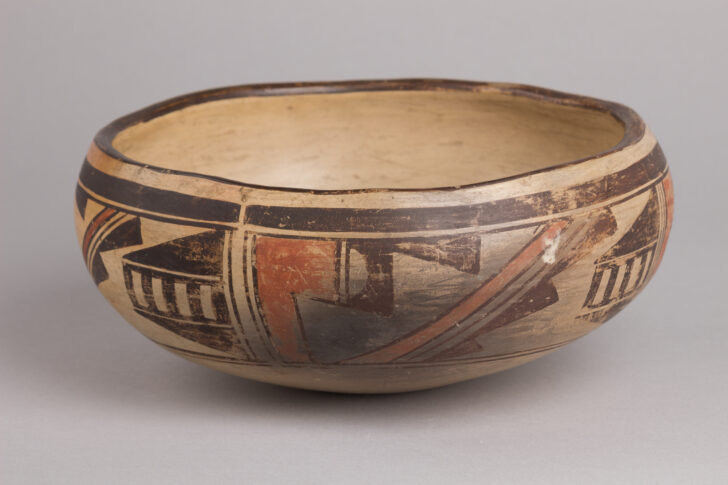Bowl
Fanny Nampeyo

Description
March 28, 2009
Num-pa-yu or Nampeyo, meaning “snake that does not bite,” was the Tewa name of a prolific and exceptional potter who became very interested in early Hopi pottery form and designs when the ancient site of Sityátki was excavated in the 1890s. Using shards she found at the site and detailed reconstruction drawings produced by archeologists, she developed her own style based on traditional designs. She has been credited with a revival of older designs and the birth of the new Hopi pottery movement now known as Hano Polychrome. By end of her life she was one of the Hopi Pueblo’s most renowned potters and drew huge numbers of tourists to her workshop; her influence led to a renewal of pottery making among the Hopi.
As Nampeyo’s eyesight began to fail, around the year 1925, her daughters Fannie and Annie helped to decorate and fire the pots their mother coiled and scraped by sense of touch until her death in 1942. For this reason, it is difficult to ascribe one attribution to vessels produced during this period.
Subject Matter:
This style of bowl design is known as Hopi Tewa Polychrome pottery, by which colored slip designs are painted over a white or off-white slip base. Fannie's mother Nampeyo is credited with the revival of this style, which she modeled after shards that she found in the nearby ancient village site of Sikyátki (First Mesa).
Physical Description:
Shallow, tan, stoneware bowl with patterns in shades of black and reddish brown on the exterior.
Usage Rights:
If you are interested in using an image for a publication, please visit https://umma.umich.edu/request-image/ for more information and to fill out the online Image Rights and Reproductions Request Form.